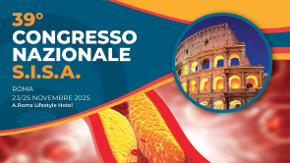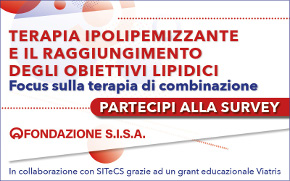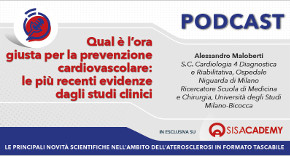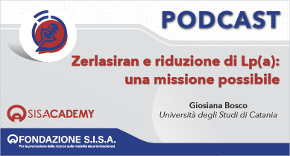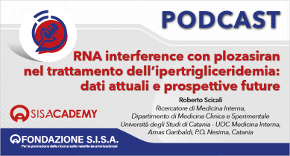 Rivista in lingua italiana
Rivista in lingua italiana
riservata ai Soci SISA
Ultimo numero:
Anno 16 • N.1/2025
Abstract
Clinical implications of JUPITER in a contemporary European population: the EPIC-Norfolk prospective population study.
Sondermeijer BM, Boekholdt SM, Rana JS, Kastelein JJ, Wareham NJ, Khaw KT
Eur Heart J. 2013;34:1350-7
AIMS: Justification for the Use of statins in Prevention: an Intervention Trial Evaluating Rosuvastatin (JUPITER) has raised several points of debate. We quantified the proportion of individuals meeting the JUPITER criteria, determined their risk profile, and their risk of coronary heart disease (CHD) events during a long-term follow-up in a contemporary European cohort.
METHODS AND RESULTS: A total of 25 639 participants aged between 45 and 79 years were followed for 11.4 ± 2.8 years in EPIC-Norfolk population cohort. A total of 8397 individuals with complete data available were considered potentially eligible for primary prevention. A total of 846 (10.1%) individuals fulfilled the JUPITER criteria [low-density lipoprotein cholesterol-C (LDL-C) <3.4 mmol/L/C-reactive protein = 2 mg]. This group had a 10-person-year event rate of 14.6% compared with 7.0% for those with LDL-C <3.4 mmol/L/C-reactive protein <2 mg (P = 0.001); the corresponding adjusted hazard ratio for future CHD was 1.70 (95% CI: 1.31-2.21). The group fulfilling JUPITER criteria had significantly higher CHD risk compared with those with LDL-C = 3.4 mmol/L and C-reactive protein <2 mg/L. Among individuals who did not qualify for statin therapy based on the Society of Cardiology Systematic COronary Risk Evaluation (SCORE) (n = 4652) or ATP III criteria (n = 4466), 18.1 and 18.9%, respectively, would have qualified using the JUPITER criteria.
CONCLUSION: In this European cohort, JUPITER-eligible individuals had significantly higher event rates compared with those with LDL-C <3.4 mmol/L/C-reactive protein <2 mg and LDL-C = 3.4 mmol/L/C-reactive protein <2 mg/L. Application of the JUPITER criteria qualified almost one-fifth of the population for statin therapy that otherwise would not have qualified based on SCORE or ATP III criteria.

Area Soci
Eventi
39° Congresso Nazionale
 39° Congresso Nazionale
39° Congresso NazionaleRoma, 23-25 novembre 2025
Save the date




 Spring Meeting Gruppi Giovani SID, SIGG, SIIA, SIMI, SIPREC, SISA
Spring Meeting Gruppi Giovani SID, SIGG, SIIA, SIMI, SIPREC, SISARimini, 6-8 aprile 2025
[continua a leggere]
 SISA LIPID ACADEMY - Corso avanzato di lipidologia clinica
SISA LIPID ACADEMY - Corso avanzato di lipidologia clinicaModena, 4-5 Luglio 2024
[continua a leggere]Giornale Italiano Arteriosclerosi
HoFH today
 Rivista Italiana della
Rivista Italiana della
Ipercolesterolemia
Familiare Omozigote
Anno 6 • N.1/2024
Rivista NMCD
Diateca
[continua a leggere]
[continua a leggere]
Newsletter
il vostro indirizzo di posta elettronica
Progetto LIPIGEN

Nuovo sito dedicato al Progetto LIPIGEN
Progetto LIPIGEN - Vecchio portale
E' necessario essere loggati come utente
Lipigen per poter accedere alla pagina
PROject Statin Intolerance SISA
PROSISA – PROject Statin Intolerance SISA
E' necessario essere loggati come utente
PROSISA per poter accedere alla pagina
GILA - Lipoprotein Aferesi
Gruppo Interdisciplinare Lipoprotein Aferesi
(Accesso Gruppo GILA-Lipoprotein Aferesi)
E' necessario essere loggati come utente del Gruppo GILA per poter accedere
Gruppo Interdisciplinare Lipoprotein Aferesi
(Documentazione ad accesso libero)
Pagina informativa per medici e pazienti


